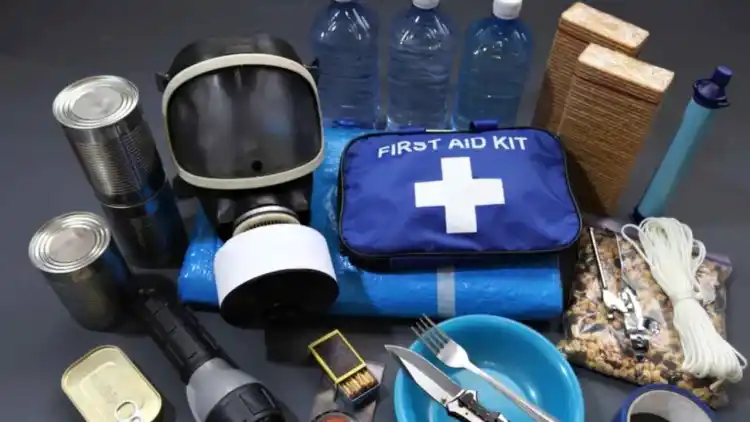- What is a Neon Car?
- Why Are Neon Cars So Popular?
- How to Install Neon Lights on Your Car?
- Pros and Cons of Neon Lighting for Cars
- Tips for Maintaining Neon Car Lights
- FAQ
Transform your car into a glowing neon car masterpiece! Whether you're new to car customization or dreaming of an extraordinary look, this guide has all the answers.
What is a Neon Car?
A neon car is any vehicle that has been enhanced with glowing neon lights to create a distinctive look. These lights can be installed underneath the car, on the wheels, or even inside the cabin. The purpose is to make the car attractive, unique, or even futuristic. Neon lighting is common among car enthusiasts and is a popular feature at auto shows. If you want your car to truly stand out, neon lighting is one of the best ways to achieve a head-turning effect.
Some key elements of neon cars include:
Underglow Lights: Lights mounted on the underside of the car to create a glowing halo beneath the vehicle.
Interior Lights: Strips of neon or LEDs installed within the car cabin to give it a cool ambience.
Wheel Well Lights: Lights installed inside or around the wheel arches, adding a touch of radiance to the wheels.

Why Are Neon Cars So Popular?
Neon cars are more than just a trend. They represent a bridge between functionality and a personal sense of style. Below are just a few reasons why they’re trending:
Eye-Catching Design: Neon lighting can completely transform the way your car looks at night, giving it a unique and futuristic appearance. People admire the aesthetic enhancement, especially when it’s done tastefully.
Individuality: For car enthusiasts, neon lighting is a creative outlet. Everyone can pick their own colors, brightness, or even custom patterns to reflect their personality.
Nighttime Visibility: Neon cars are not just about aesthetics. They are practical in some cases, as the glowing lights make the vehicle more visible during nighttime. This can also help other drivers spot your car more easily, adding a layer of safety.
How to Install Neon Lights on Your Car?
While some prefer professional help, installing neon lights isn’t as complicated as you might think. Follow these steps to ensure a smooth process:
1. Choose Your Neon Setup
Decide where you want to place the neon lights. The most common options include:
Undercarriage lights to elevate the overall appearance.
Interior cabin lights for a more inviting personal environment.
Wheel well lights for added flair.
2. Verify Local Restrictions
Check traffic laws in your city or country before installation. Some areas might prohibit certain colors (like red or blue) or flashing patterns. Ensure you comply fully to avoid fines.
3. Gather Required Materials
Before you start, you’ll need materials like:
Suitable neon tubes or durable LED light strips.
Adhesive backings or zip ties.
Wiring kits, electrical tools, and a dedicated switch or controller.
4. The Installation Process
Clean all mounting surfaces: Dust or grease will prevent adhesives from working properly.
Secure each component: Whether under the car or inside the cabin, ensure all strips or tubes are tied or mounted firmly.
Wire the lights properly: Connect to either the battery or another safe power source using suitable connectors.
5. Test Operation
After completing the setup, turn your lights on to verify proper functionality. Inspect for loose connections or unlit sections.

Pros and Cons of Neon Lighting for Cars
Pros:
Improved Looks: Makes your car stand out in any setting.
Creative Opportunity: Lets you customize your car in endless ways.
Increases Car Visibility: Especially helpful at night.
Cons:
Legality Issues: Not all areas permit certain neon lights.
Potential Battery Drain: Excessive use could hurt your car’s battery life.
Vulnerable to Damage: Lights are sensitive to harsh weather and rough terrain.
Tips for Maintaining Neon Car Lights
To make sure your neon car lights last long, here are some helpful tips:
Avoid driving on unpaved or rocky roads, as flying debris may damage the lights.
Use a microfiber cloth to gently wipe away dirt without scratching the tubes or strips.
Inspect wires routinely to prevent shorts or disconnections.
Invest in weatherproof coatings. If you live in areas prone to rain or snow, this helps protect the lights.

FAQ
Are neon lights legal on the street?
This depends on where you live. In many countries, neon lights are allowed, but flashing and specific colors may not be. For example, police in some areas reserve blue and red for emergency vehicles.
Do neon lights burn out quickly?
If well-maintained, neon lights or modern LED equivalents can last for years before needing replacement.
Are LEDs better for neon cars?
Many users prefer LEDs over traditional neon gas tubes as they’re more versatile, energy-efficient, and resistant to breaking.
How expensive is the setup?
Expect basic installations to cost 370-735 AED or 375-735 SAR. High-end kits, including professional work, can surpass 1470 AED/SAR.
Can I install neon lights at home?
Absolutely! DIY kits are readily available, provided you have basic wiring skills and proper tools. For a polished look, however, professional installation is a good choice.
Light up the roads and unleash your creativity with neon lighting! From safety benefits to aesthetic appeal, there’s no better way to make your car exceptional.
Read More:
2016 Elantra Body Kits:2025's Best Style Upgrades Revealed
2025 Ford Escape Engine CC:Smart Choices for Modern Drivers
Lynk & Co UAE: A Comprehensive Guide to Features, Models, and Ownership
{}












